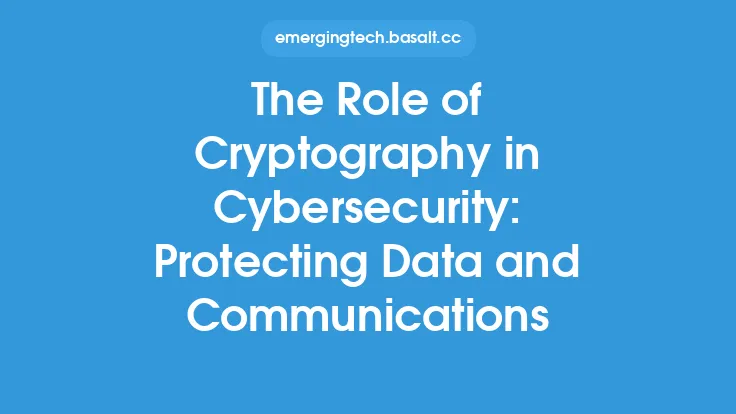Cryptography is a vital component of modern cybersecurity, and its applications extend far beyond the realm of computer science and information technology. In everyday life, cryptography plays a crucial role in securing various aspects of our personal and professional lives. From online transactions to secure communication, cryptography is an essential tool that ensures the confidentiality, integrity, and authenticity of data.
Introduction to Cryptography in Everyday Life
Cryptography is the practice of secure communication by transforming plaintext into unreadable ciphertext, making it inaccessible to unauthorized parties. This technique has been used for centuries, with early examples including the Caesar cipher and the Vigenère cipher. However, with the advent of computers and the internet, cryptography has become an indispensable tool for protecting sensitive information. In everyday life, cryptography is used in various forms, including encryption, decryption, and hashing. Encryption is the process of converting plaintext into ciphertext, while decryption is the reverse process. Hashing, on the other hand, is a one-way process that transforms data into a fixed-length string of characters, known as a message digest.
Online Transactions and E-commerce
One of the most significant applications of cryptography in everyday life is online transactions. When you make a purchase online, your credit card information and personal details are encrypted using a secure protocol, such as Secure Sockets Layer (SSL) or Transport Layer Security (TLS). This ensures that your sensitive information remains confidential and cannot be intercepted by unauthorized parties. Online retailers, such as Amazon and eBay, use cryptography to secure their websites and protect customer data. Additionally, online payment systems, such as PayPal and Stripe, rely on cryptography to facilitate secure transactions.
Secure Communication and Messaging
Cryptography is also used to secure communication and messaging in everyday life. Secure messaging apps, such as WhatsApp and Signal, use end-to-end encryption to protect user conversations. This means that only the sender and the recipient can read the messages, and no third party, including the app provider, can access the content. Email services, such as Gmail and Outlook, also use cryptography to secure email communications. Furthermore, virtual private networks (VPNs) use cryptography to create a secure and encrypted connection between your device and a VPN server, allowing you to browse the internet anonymously and securely.
Password Protection and Authentication
Cryptography is used to protect passwords and authenticate users in various systems. When you create a password, it is typically hashed and stored in a database. This means that even if an unauthorized party gains access to the database, they will not be able to obtain your plaintext password. Instead, they will only see the hashed version, which is useless without the corresponding plaintext password. Additionally, cryptography is used in authentication protocols, such as Kerberos and OAuth, to verify user identities and grant access to secure systems.
Digital Signatures and Document Security
Cryptography is also used to create digital signatures, which are used to authenticate the sender of a message or the signer of a document. Digital signatures use a combination of hashing and encryption to create a unique signature that is tied to the signer's identity. This ensures that the document or message has not been tampered with or altered during transmission. Furthermore, cryptography is used to secure digital documents, such as PDFs and Word files, by encrypting the content and controlling access to authorized parties.
Cryptocurrencies and Blockchain
Cryptography plays a crucial role in the operation of cryptocurrencies, such as Bitcoin and Ethereum. Cryptocurrencies use cryptographic techniques, such as public-key cryptography and hashing, to secure transactions and control the creation of new units. The blockchain, which is the underlying technology behind most cryptocurrencies, uses cryptography to create a secure and decentralized ledger of transactions. This ensures that transactions are tamper-proof and cannot be altered or deleted.
Internet of Things (IoT) Security
The increasing number of connected devices in the Internet of Things (IoT) has created new security challenges. Cryptography is used to secure communication between IoT devices and prevent unauthorized access. For example, smart home devices, such as thermostats and security cameras, use cryptography to encrypt data and prevent eavesdropping. Additionally, cryptography is used to secure firmware updates and prevent malicious code from being installed on IoT devices.
Conclusion
In conclusion, cryptography plays a vital role in securing various aspects of our everyday lives. From online transactions to secure communication, cryptography is an essential tool that ensures the confidentiality, integrity, and authenticity of data. As technology continues to evolve, the importance of cryptography will only continue to grow. By understanding the basics of cryptography and its applications, we can better appreciate the importance of this technology and take steps to protect our sensitive information in an increasingly digital world.





